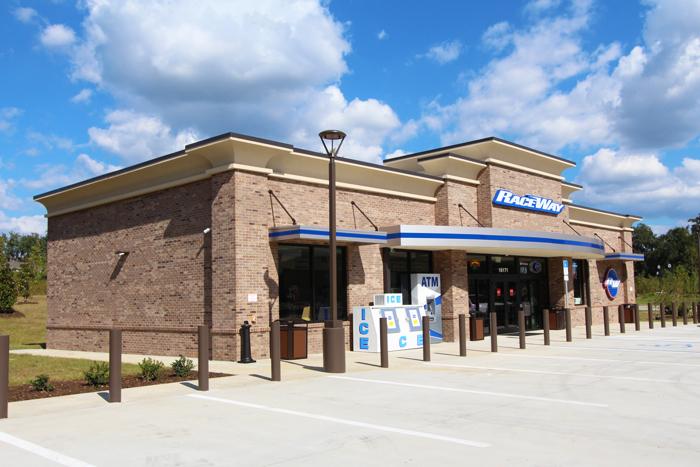In the world of high-octane performance and automotive enthusiasm, few topics generate as much debate and curiosity as raceway gas. This specialized fuel, designed for racing applications and high-performance engines, holds a mystique that attracts gearheads, engineers, and casual fans alike. What sets it apart from traditional gasoline? How does it affect engine performance and efficiency? As motorsports continue to evolve, understanding the intricacies of raceway gas becomes vital not just for racers on the track but for anyone interested in the mechanics behind the rapid acceleration and roaring engines that define racing culture. This article delves into the science, benefits, and practical applications of raceway gas, shedding light on its unique properties and the role it plays in pushing the boundaries of speed and performance. Join us as we navigate the thrilling intersection of fuel technology and automotive excellence.
Table of Contents
- Exploring the Essential Benefits of Raceway Gas for Modern Vehicles
- Understanding the Environmental Impact of Raceway Gas Usage
- Maximizing Efficiency: Best Practices for Fueling with Raceway Gas
- Navigating the Market: Selecting Quality Raceway Gas Suppliers
- Q&A
- Concluding Remarks
Exploring the Essential Benefits of Raceway Gas for Modern Vehicles
Raceway gas stands out as a modern choice for drivers seeking to enhance their vehicle performance. With its unique formulation designed for high-efficiency engines, it can significantly improve fuel economy and reduce emissions. The superior octane rating not only provides greater power output but also contributes to smoother acceleration, making it ideal for both everyday commuting and spirited driving. Some of the essential benefits include:
- Enhanced Engine Performance: Optimized for high-performance vehicles, allowing for increased horsepower and torque.
- Improved Fuel Economy: Higher efficiency translates to fewer refueling stops and longer journeys.
- Lower Emissions: Contributes to a cleaner environment by reducing harmful exhaust gases.
- Reduced Engine Knock: Helps maintain engine health by minimizing pre-ignition issues.
Moreover, the consistent quality of raceway gas offers not just immediate benefits but long-term advantages for your vehicle’s longevity. Many manufacturers endorse its use as it meets or exceeds standards for high-octane fuels. The table below highlights how raceway gas compares to traditional fuels in a few key aspects:
| Feature | Raceway Gas | Traditional Gas |
|---|---|---|
| Octane Rating | 91+ | 87-89 |
| Fuel Efficiency | Up to 15% better | N/A |
| Emissions Reduction | 30% lower | N/A |
Understanding the Environmental Impact of Raceway Gas Usage
Raceway gas, often embraced for its efficiency in industrial processes, also casts a shadow of environmental concerns that cannot be overlooked. Some key aspects contributing to its environmental footprint include:
- Greenhouse Gas Emissions: The combustion of raceway gas releases carbon dioxide and other greenhouse gases, exacerbating global warming.
- Air Quality: Emissions from gas combustion can lead to local air pollution, negatively impacting human health and ecosystems.
- Water Use: The extraction and processing of raceway gas often consume significant water resources, putting stress on local water bodies.
To better understand the environmental trade-offs, a comparison can be drawn between raceway gas and alternative energy sources. This evaluation highlights the need for a balanced approach to energy usage, allowing for sustainability without compromising on efficiency. A simple overview is provided in the table below:
| Energy Source | Emissions (CO2 equivalents) | Water Use (liters per MWh) | Renewability |
|---|---|---|---|
| Raceway Gas | 450 kg | 500 | No |
| Solar Energy | 20 kg | 30 | Yes |
| Wind Energy | 10 kg | 0 | Yes |
By analyzing raceway gas in the context of these alternatives, stakeholders can make informed decisions that prioritize both economic efficiency and environmental responsibility.
Maximizing Efficiency: Best Practices for Fueling with Raceway Gas
Optimizing your raceway gas usage not only enhances performance but also contributes to cost savings. To achieve this, consider implementing the following best practices:
- Regular Maintenance: Schedule consistent checks to ensure your raceway gas system operates smoothly.
- Monitor Usage: Utilize smart meters to track fuel consumption and identify any irregular usage patterns.
- Temperature Control: Maintain optimal temperatures within raceways to reduce gas demand.
- System Upgrades: Invest in the latest technology to increase efficiency and compliance with environmental standards.
In addition to these practices, training staff on effective gas management and operational techniques can yield substantial results. Consider the following strategies to empower your team:
- Workshops: Conduct regular training sessions to discuss best practices and updates in equipment.
- Communication: Foster an environment where team members can easily share insights and challenges related to gas usage.
- Feedback Loops: Establish a system for collecting feedback to continuously improve operations.
| Practice | Benefit |
|---|---|
| Regular Maintenance | Reduces downtime and enhances performance |
| Monitor Usage | Identifies areas for cost reduction |
| Temperature Control | Minimizes fuel consumption |
| Staff Training | Improves operational efficiency |
Navigating the Market: Selecting Quality Raceway Gas Suppliers
Choosing the right raceway gas supplier requires a careful assessment of several critical factors to ensure a reliable and quality service. It’s essential to consider suppliers who prioritize safety standards and adhere to regulatory compliance, as this significantly impacts your operations. When evaluating potential partners, look for those who provide transparent communication about their sources, pricing structures, and delivery schedules. Establishing a solid relationship based on trust and dependability can enhance your operational efficiency and minimize risks associated with supply chain disruptions.
Moreover, understanding the supplier’s customer support and service capabilities can be a game-changer. Before making a selection, inquire about their response times and problem resolution processes. Reliable suppliers often offer comprehensive support to address any issues promptly. Additionally, consider the following key points when narrowing down your options:
- Reputation in the industry
- Variety of gas products offered
- Flexibility in supply quantities
- Environmental sustainability practices
Q&A
Q&A: Exploring the World of Raceway Gas
Q: What exactly is raceway gas, and how is it different from regular gasoline?
A: Raceway gas is a high-octane fuel specifically designed for performance vehicles, particularly in motorsports. Unlike regular gasoline, which is formulated for a variety of everyday vehicles, raceway gas typically contains additives and a higher octane rating to withstand the extreme conditions of racing. This means it can provide more power and efficiency, enabling race cars to achieve optimal performance on the track.
Q: What benefits does raceway gas offer to drivers and racing teams?
A: The primary benefit of raceway gas is its ability to enhance engine performance. With a higher octane level, it reduces the chances of engine knocking, allowing for more aggressive tuning and increased horsepower. Additionally, it can improve throttle response and acceleration, providing drivers with the competitive edge they need in high-stakes racing environments.
Q: Are there any drawbacks to using raceway gas?
A: While raceway gas can offer substantial benefits in a racing scenario, it’s not without its drawbacks. It tends to be more expensive than conventional gasoline, which can strain a racing team’s budget. Also, it’s formulated for high-performance engines, meaning it may not be suitable for standard consumer vehicles in terms of efficiency and engine wear over time.
Q: Is raceway gas available for general public use?
A: Generally, raceway gas is specifically sold at racetracks and select performance fuel suppliers. While some high-performance car enthusiasts may have access to raceway gas at specialized service stations, it’s not as widely available as traditional fuels. Additionally, using it in non-performance vehicles may offer limited benefits, and in some places, it might not meet legal regulations for street use.
Q: How does raceway gas impact vehicle maintenance and engine longevity?
A: In a racing context, using raceway gas can lead to optimized performance but also requires careful tuning and maintenance to ensure engines run smoothly. In theory, raceway gas can minimize wear from engine knocking, but its use demands rigorous upkeep from teams to prevent issues associated with running highly tuned engines. For everyday vehicles, however, the strain from prolonged use of raceway gas can lead to increased wear and tear, negating any benefits.
Q: How has raceway gas evolved with advancements in automotive technology?
A: Raceway gas has continuously evolved alongside advancements in automotive technology, particularly with developments in engine efficiency and tuning. Manufacturers are now experimenting with new fuel blends and chemicals to enhance combustion efficiency while minimizing harmful emissions. This evolution reflects the racing community’s effort to balance performance with environmental responsibility, leading to innovations such as renewable race fuels tailored for advanced racing applications.
Q: Will the future of raceway gas involve alternative energy sources?
A: The future of raceway gas is likely to integrate alternative energy sources as the racing industry evolves. With growing interest in sustainable practices, we may see the emergence of biofuels or synthetic fuels capable of providing the performance needed in race conditions. These alternatives could help mitigate the environmental impact of motorsports while still delivering the high-octane excitement that race fans and drivers crave.
Q: Is there any way for enthusiasts to get involved with raceway gas and motorsports?
A: Absolutely! Motorsports enthusiasts can get involved by attending local race events, joining racing clubs, or even participating in amateur racing leagues. Many racing teams and workshops offer educational programs or training sessions that cover everything from vehicle maintenance to fuel choices, including raceway gas. Engaging with communities online and in person can also provide valuable insights into the intricacies of racing fuels and performance strategies.
Concluding Remarks
As the sun sets on our exploration of raceway gas, it becomes evident that this powerful fuel source plays a pivotal role in the intricate dance of modern energy consumption. Whether you’re a motorsport enthusiast reveling in the thrill of high-speed races or a curious reader delving into the mechanics of fuel efficiency, understanding the nuances of raceway gas unlocks a deeper appreciation for the harmony of performance and innovation. As the industry continues to evolve, so too does the potential of raceway gas to shape the future of racing and beyond. In this ever-adapting landscape, staying informed will undoubtedly fuel your passion for the ongoing journey towards sustainable and exhilarating speed. Thank you for joining us on this ride; the road ahead is wide open for discovery.


